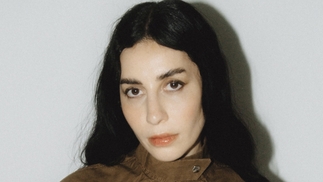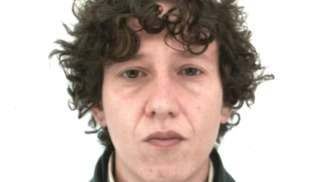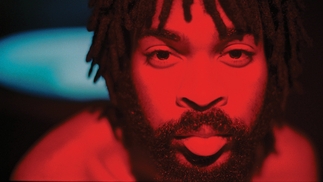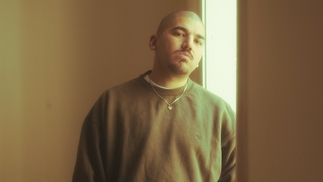Recognise: Heavee
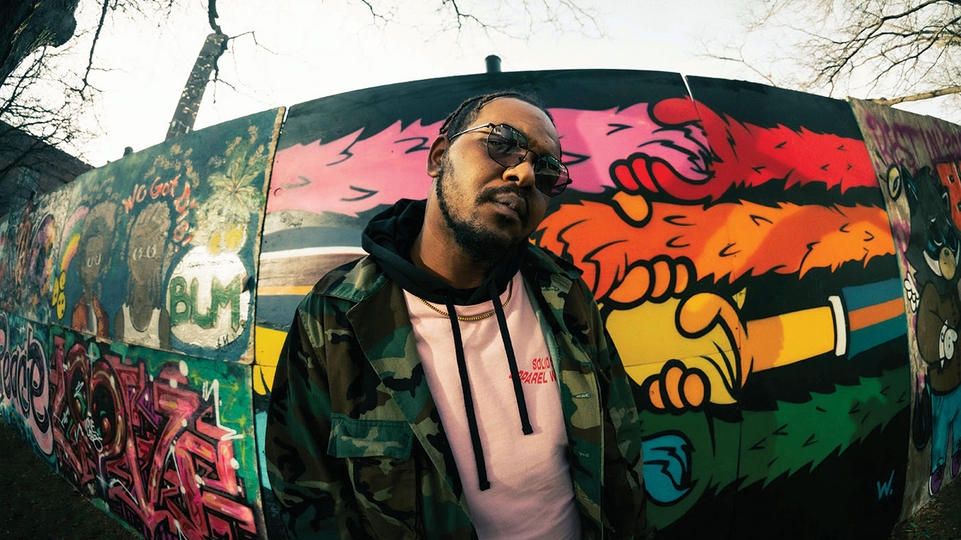
Chicago footwork artist Heavee steps up for the Recognise mix series, and speaks to Arielle Lana LeJarde about following in the footsteps of their mentor DJ Rashad by releasing an EP on Hyperdub, and how cartoons and video games helped lead him to a life in electronic music
Some artists are constantly chasing the high of their next success, but Chicago native Heavee is still basking in the positive response to his new Hyperdub release, the ‘Audio Assault’ EP. Some nights, that means showing out to support their fellow footwork peers and letting loose. But during the day, when the producer works security for the emergency room at a hospital, he uses his commute time to dig into other artists’ crates and make playlists.
Sporting a boldly coloured bucket hat, bright-eyed and softly spoken, Heavee — who uses both he/him and they/them pronouns — tells DJ Mag about their art and life story with an air of gratitude and humility. “I do appreciate the balance [of also working a service job] because I don’t force myself to lean on music,” he shares. “It also helps me appreciate the relationship that I have with music.”
When he goes to shows, it’s not all about work — he’s there to enjoy the experience. Because of their schedule, they only go to events when they really want to be there. And when Heavee releases a massive project with a lauded label like Hyperdub, he’s not too worried about immediately lining up whatever’s next.
Before they were Heavee, Darryl Bunch Jr. was already in love with music. He enjoyed sitting in the back seat of his mom’s car, listening to everything from The Temptations to Tupac. His brother handed down an even deeper love of hip-hop, like Master P and Psycho Drama, and his sister introduced him to more eclectic musicians like Kelis and Jill Scott.
But his love of dance music comes from an innate interest in idiosyncrasies. The first time they heard drum & bass was when they watched Cartoon Network’s iconic 1998 TV series, The Powerpuff Girls. “I was a kid and I’m hearing drum & bass — I’m hearing breakbeats. It was just unique,” he remembers. “It made me go, ‘Wow, music doesn’t have to follow the same structure and rhythm that I would hear in the type of music that my mom would play or that my brother would play or that my sister would play.”
Heavee’s epiphany ultimately led him to seek out more dance music, eventually finding the Chicago-rooted genre we now know them for, footwork. “That helped really open the floodgates,” they continue.

Fortunately, Bunch was in the perfect place to experience footwork. “You start off as a spectator. You start off going to juke parties, just enjoying the environment, and then being encapsulated by it.”
The genre works in conjunction with its eponymous dance, which is how Heavee first got involved. “My friends started doing it, and now they’re practising it on the street, on our block. And now I want to practise. Now I’m practising with them. Now I’m practising every day,” he recalls.
During his sophomore year of high school in 2008, a footwork dancer well-known on YouTube, Ace Boogie, ended up transferring to his school. Having practised hard, Bunch and their friends would go on to join Boogie’s dance group, Animosity.
Heavee explains how community-driven dance groups were during that time, noting that’s what the current scene is missing. “I can imagine that opening up different communities within Chicago, and them coming together at parties. It happened just like that in my community,” he says. “We’re sharing and exchanging moves, battles, trading stuff and showing off.”
Dance downs were an integral part of the scene, events where different groups came to perform together and showcase routines. DJs would mix tracks produced specifically for footworking to, named after different dancers or dance groups. “I couldn’t get tracks from other people fast enough so I started making my own,” says Heavee, laughing when asked if this was the reason he started producing himself. “Before I even had a computer, I actually found a game called Digital Hitz Factory. So I started making music on my PS2.”
An Afrofuturist aficionado of cartoons, video games and technology, avant-garde samples and sounds that reflect this have helped shape his leading-edge take on footwork. They point to early 2000s video game Jet Set Radio Future as one particular influence — “It definitely helped push me into what my own taste in music is and what I like as an individual” — name-dropping Hideki Naganuma, who co-wrote the game’s score, and the band Cibo Matto, who featured on the soundtrack, as two artists they continue to follow to this day.
For his ‘Audio Assault’ EP, Heavee was alternatively inspired by the sounds around him. While walking the streets of Downtown Chicago after work, for instance, they recall being mesmerised by the sound of loud crickets, so they stopped, took out their phone, and recorded it. “They had a specific cadence and rhythm. It was like a triplet. And I was like, ‘Oh, wow!’”
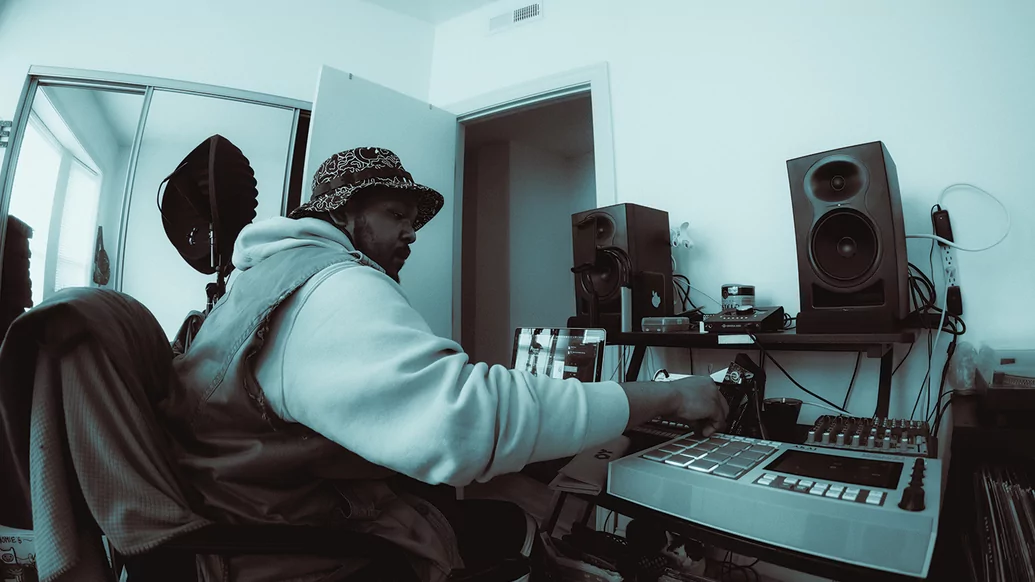
Another inspiration was Kode9’s book, Sonic Warfare: Sound, Affect, and the Ecology of Fear. Heavee named one of his own tracks ‘Sonic Warfare’ and sent it to the Hyperdub founder — it’s now the closing track on his EP. “I named the track ‘Sonic Warfare’ in respect to his ideals of music,” they divulge. “It can be weaponised, and music not only has one purpose. And it goes back to my ideas of how I found electronic music — music doesn’t have to follow this one format or arrangement.”
For Heavee, 2023 will mark 10 years the producer has known about Hyperdub, making this year’s EP a career milestone for him. One of the London label’s most famous signings was Heavee’s mentor, the late footwork pioneer, DJ Rashad. Their smile fills up the screen of our Zoom call as they reminisce about the trailblazing artist. “Even when I was out of town, I was sending him music. When I was away at school, I was sending in music. And he would leave me voicemails, giving me critiques. Straight up, if he liked it, he would tell me. If he didn’t, he would tell me,” says Heavee. “He helped me keep producing when I felt like I didn’t have a reason to because I was in a new environment. And he kept me going. So when I came back, I said I wanted to be in Teklife and [Rashad] was like, ‘Let’s do that’.”
The two collaborated on ‘It’s Wack’ together in 2013 for FlyLo FM, a radio station hosted by Flying Lotus in Grand Theft Auto V — a full circle moment for video game devotee Heavee. “I never used any of the equipment that they had, but my voice was something Rashad felt like I could use as an instrument. ‘No, you got a nice voice. Pause’ — it was just how he said it,” they fondly recall. The track also featured on Heavee’s debut album ‘WFM’, released in 2018 on Teklife.
Like trading moves or collaborating on choreography in his Animosity days, Heavee now tries to pass game to fresh faces in the footwork scene. He jokes, “I don’t have a direct mentee or person I’m bringing up — I will raise a monster, yo!”
The support they received from Kode9 and DJ Rashad showed them the value in helping uplift a new generation. “I realise we’re not the end all, be all. It’s going to continue to grow with or without us and I would rather be on the good side. [I] just [want to] be able to share something and help somebody who’s younger get to where I’m at right now, at least twice as quick and just as good.”
Listen to Heavee's Recognise mix below.


